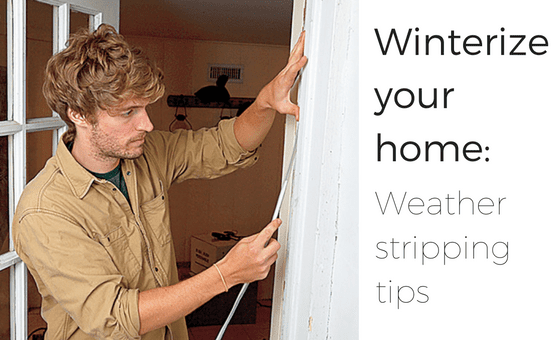Winterize your home: Weather stripping tips!
Weather stripping and exterior door thresholds occasionally require cleaning and adjustment or replacement. November is a great time to make sure the inside of your home is sealed up to protect against the winter weather.
BC Hydro
BC Hydro has some great tips on how to seal those gaps and cracks in your home, helping you to save energy and be more cost effective. More information.
Materials
There are different types of materials that can be used, depending on what you are repairing. This website ‘FamilyHandman.com’ provides an easy to read list with photos of each type of material used in making these repairs. More information.
Find materials at your local hardware store, such as Home Depot. More information.
Helpful Ideas
In order to get our doors working properly it is essential to take a look at all parts of the door to make sure they are all working efficiently. Some of these items are listed in the National Home Warranty manual.
• Doors and Locks
Doors inside new homes are wood products and are subject to shrinkage and warpage if the humidity level of your home is not maintained at an acceptable level, or if the finish (paint or stain etc.) is damaged and left un-repaired. Normal fluctuations in humidity levels from the use of forced air furnaces, showers, cooking and dishwashers, may result in interior doors occasionally requiring minor adjustments.
• Failure to Latch
If a door will not latch because of minor settlement of the structure, the latch plate can be adjusted as necessary. Before adjusting the latch plate check that the hinge screws are tight.
• Locks
Lubricate door locks with silicone spray or another non-staining, waterproof lubricant. Avoid using oil, as it may solidify and become “gummy”.
• Shrinkage
Use putty, filler or latex caulk to fill any minor cracks or separations that typically occur at mitered joints in door trim. Sand and paint with the matching paint included in your new home paint touch-up kit. The need for paint touch-ups to walls and woodwork due to normal wear and tear is a homeowners’ maintenance responsibility.
• Sticking
The most common cause of a sticking door is the natural expansion of the door or framing lumber caused by changes in humidity. If doors stick, check and tighten the hinge screws that hold the door jamb or door frame. If light planing is necessary after trying this, use sandpaper to smooth the door and paint or stain the sanded area to seal it. If the sticking is excessive contact your builder to ensure there isn’t a more serious problem.
• Warping
Doors may warp slightly; this is normal. If the warping is not excessive, keeping the door closed as much as possible may return it to its original shape. Avoid having items leaning against open doors that are tight against the door stop. Acceptable warping fluctuations should not exceed 6 mm (1/4”) of deflection.
• Panel Shrinkage
Panel inserts of wood doors shrink and expand in response to changes in temperature and humidity. Touching up the paint or stain on unfinished exposed areas is your home maintenance responsibility.
Weather stripping is essential for homeowners who would like to keep their home running efficiently. However, if you have any concerns your questions should be carried out by qualified professionals.


